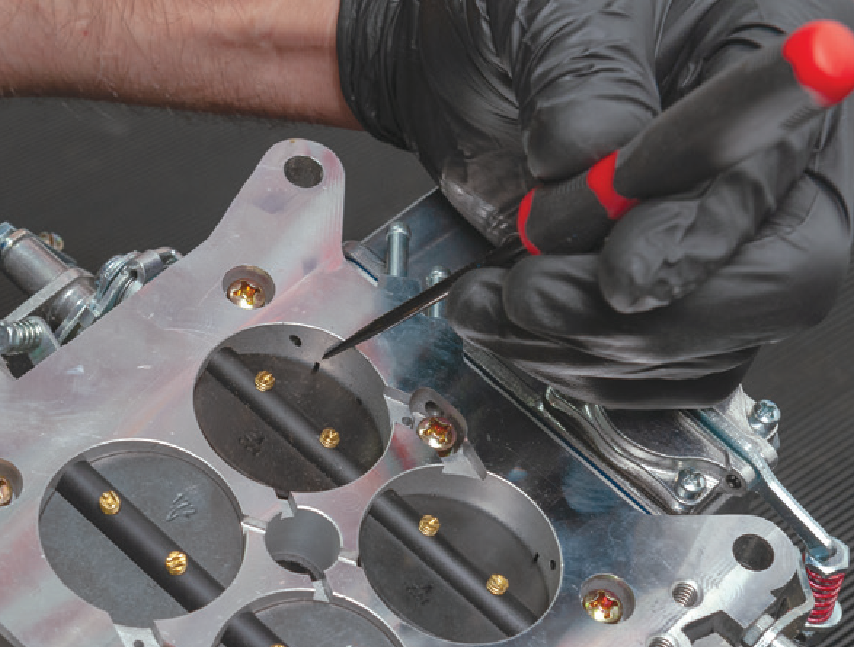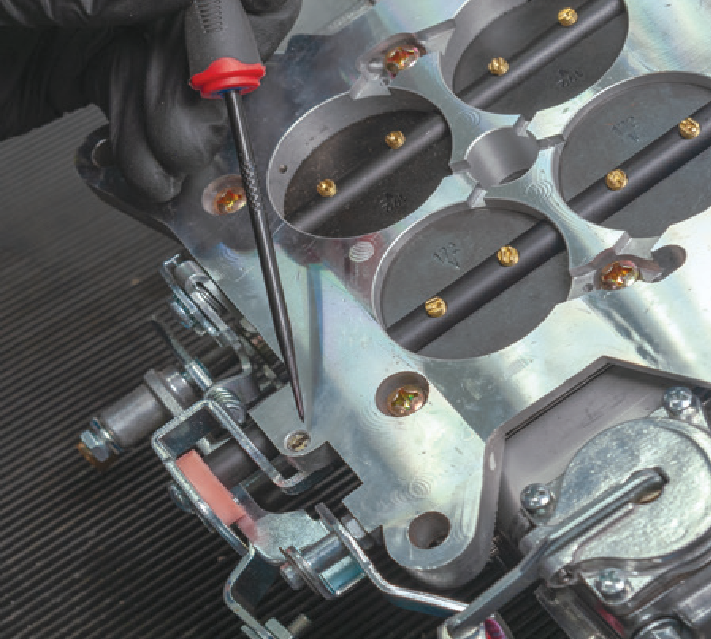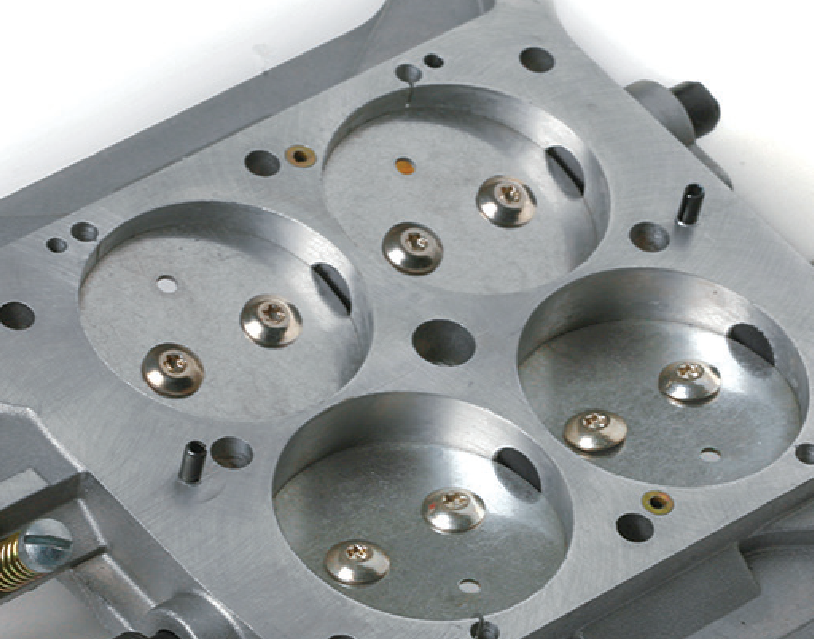Q. I have a Chevy 350 engine with a Holley 650 double pumper and a COMP Cams Xtreme Energy camshaft in my street rod. I’m unable to get the idle fuel mixture lean enough. The idle mixture screws are turned all the way in, and the engine still idles a little rich. Can you give me some pointers on idle tuning?
A. Improper carburetor float level setting or excessive fuel pressure can cause a rich idle condition. A carburetor power valve opening prematurely because of an incorrect vacuum opening point (indicated by the number printed on the valve) or insufficient idle vacuum can make the situation worse. Additionally, fuel can be drawn in through a ruptured power valve diaphragm; it should be inspected and ruled out.
Engines equipped with camshafts that have increased overlap need a higher curb rpm to idle correctly. As the idle screw is turned to raise the curb idle speed, the transfer slots located just above the blades may be exposed (photo A), allowing unmetered fuel to be drawn into the engine at idle.

One technique to reduce the primary throttle opening at idle (while maintaining the correct curb idle speed) is to increase the secondary throttle blade opening slightly (photo B) to balance idle airflow through all four throttle blades.

side similar to the primary idle speed adjustment screw. (Image/Summit Racing)
Another trick is to drill a small hole in the throttle blades (photo C); this allows airflow through the blades while they remain closed. When doing this, you want to start small because it’s much easier to increase hole size than go back and replace blades. We recommend starting with an .080″ hole in each one. Ignition timing can also play a role in idle speed and quality. Increased valve overlap reduces cylinder pressure, increasing the amount of time it takes to burn the mixture.

Advancing the base timing will allow the ignition more time to complete the combustion process, effectively increasing idle speed and improving throttle response. Pay attention to the overall timing curve, so you don’t over-advance total timing. Limiting the mechanical advance in the distributor may be necessary.

The idle mixture screws should be turned out to lean not in.
Only on rare reverse idle carbs. The vast majority of carburetors in = lean.
How about hooking up the vacuum advance to manifold vacuum?
In many cases, hooking to manifold vacuum improves throttle response, fuel economy, and makes the engine run significantly cooler especially @ idle.
And even if “My Buddy” says it costs you 50 horsepower, he couldn’t be further from the truth.
This is a good subject as many people have had this problem and you have said it correctly . A 650 DP carb is far ahead of vac-2nd carb and is for a carb tinker MAN- anyway Thankyou.
A great piece, all info and no bs. So many articles like this are wordy with no useful info. Please do more on carbs.
Hey Rich–thanks for reading and we appreciate the comment. If you want to read more on carburetors, click here to see some other carb tuning articles.
Very good reply with modifications needed to fix the problem.
Excellent tips for very common size carb on project cars and daily drivers.